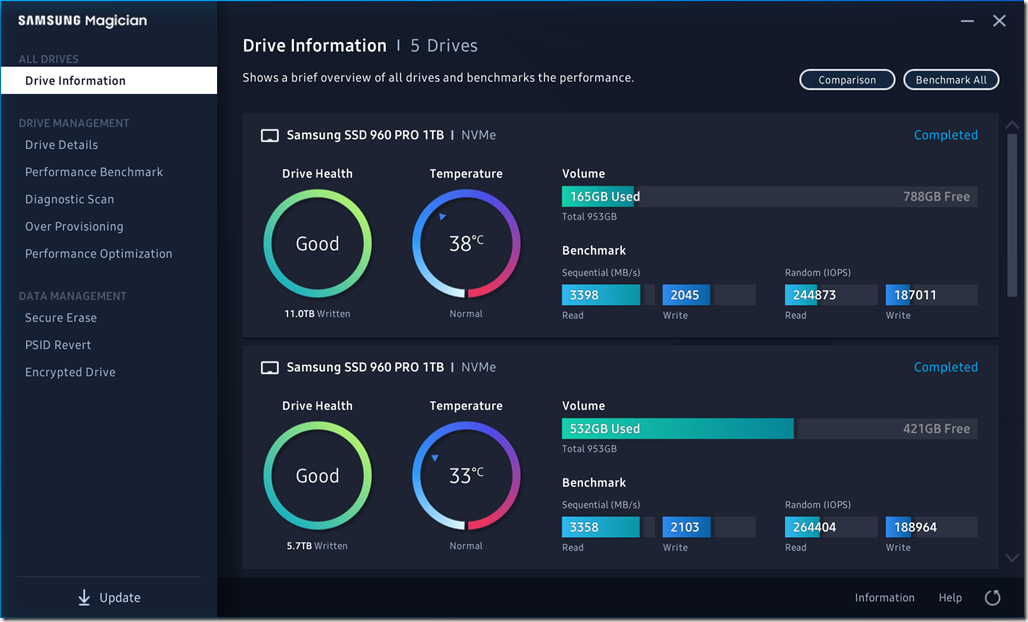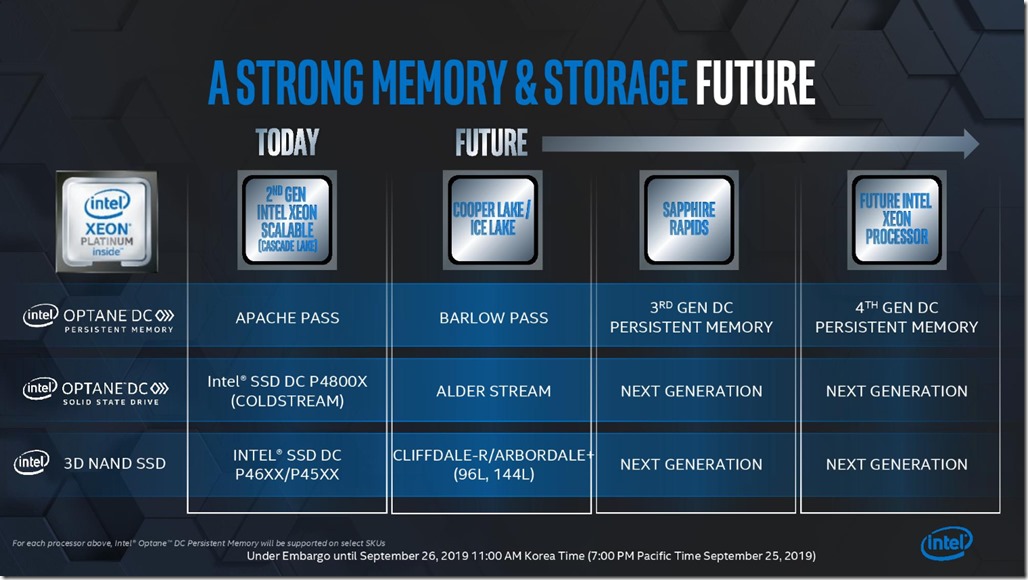(Glenn’s Technical Insights… used to be part of our bi-weekly newsletter but we decided to make it a regular blog post instead so it can get more visibility. It covers interesting new hardware and software developments that are generally relevant for SQL Server). It also can just be technically related items that I find interesting.
Useful Utility/Benchmark Software Updates
Samsung has released a new version of Samsung Magician, which is now version 6.0. This release has a completely new user interface, and quite a bit of additional functionality. I have noticed that it takes longer to startup and scan your drives compared to the previous version. If you have any Samsung SSDs in your system, you really should have their Magician software, especially for obtaining and installing firmware updates.
Figure 1: Samsung Magician 6.0
CrystalDiskMark 7 Beta 4 is available, with many new features along with additional testing and display modes. These include displaying IOPS and latency information in the main GUI.
You can also choose from different testing profiles, which essentially let you do similar testing compared to running Microsoft DiskSpd natively. This is going to make CDM a much more useful tool.
Figure 2: CrystalDiskMark 7.0 Beta4 – Default Profile
Figure 3: CrystalDiskMark 7 Text Results
This is one of the new testing profiles.
Figure 4: CrystalDiskMark 7.0 Beta4 – Peak Performance + Mix Profile
2nd Generation Intel Optane DC SSDs Coming in 2020
I’ve been very impressed with the 1st generation Intel Optane SSD DC P4800X “Coldstream” storage devices that use two-layer 3D XPoint media. They have been available since mid-2017, and they are extremely well-suited for certain types of SQL Server I/O workloads. One prime example is write heavy tempdb workloads.
Now, Intel is starting to reveal more details about the 2nd generation devices in this family. These are code named “Alder Stream”, and they will use Barlow Pass 3D XPoint media with four layers. It is also probable that they will have PCIe 4.0 support, and a new, faster controller. They are due for release in 2020, and they will have up to double the capacity and significantly better performance than the current generation.
One key advantage of these devices is that they will work with legacy versions of SQL Server and legacy hardware. As long as you have PCIe 3.0 x4 hardware support and your OS supports NVMe drivers, you can use them.
Figure 5: Intel Memory and Storage Roadmap





